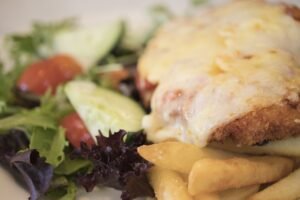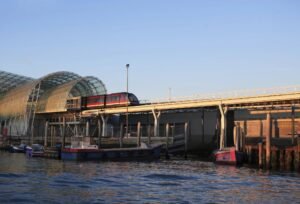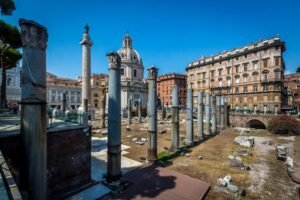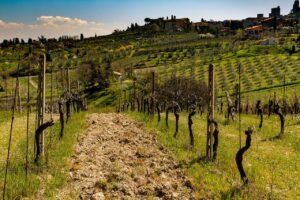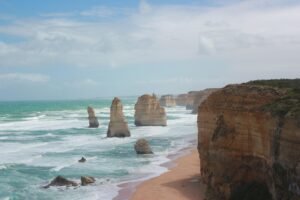10 best wineries in Tuscany | discover the top picks.
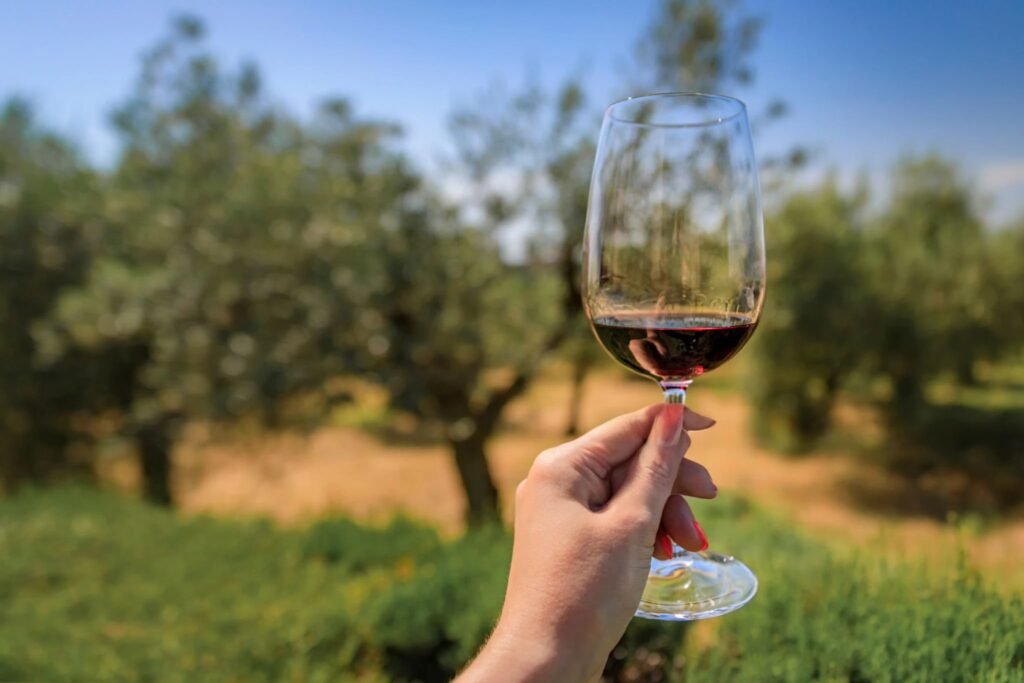
Table of Contents
In this blog, I’m doing a deep dive into Chianti Classico. Why Chianti Classico? Well, there are several reasons. In addition, quality levels in Chianti Classico have never been higher, and for reasons I’ll discuss later in this blog, I expect that to continue in the foreseeable future.
It’s also very timely, as the Consorzio for Chianti Classico just released some new regulations applicable to Gran Selezione.
In this blog, I’m going to start by briefly discussing the history of Chianti Classico. After that, I’ll discuss Sangiovese and some of the special growing conditions that make Chianti Classico ideally suited for the production of high-quality wine from Sangiovese. I’ll then briefly touch on the different levels of quality in Chianti Classico. After laying that groundwork, I’m going to reveal some of my favorite producers of Chianti.
Restricted yields, ideal soils
Sangiovese is capable of producing extremely high yields, but unless the producer is quality-minded and makes a conscious decision to restrict yields—ensuring a lower harvest of grapes—you’re likely to end up with an uninspiring and disappointing wine. So, you definitely want to focus on a quality-minded producer, such as the ones I’ll be discussing later in this episode.
There are at least four reasons why Chianti Classico wines can offer such high quality.
First, as mentioned, Sangiovese-based wines are at their best when yields are restricted, and Chianti Classico has much more stringent yield requirements than Chianti DOCG does.
In addition, the elevations in Chianti Classico are much higher than in most of Chianti DOCG, and those higher elevations help produce higher-quality Sangiovese.
The soils in Chianti Classico are also ideally suited for the production of high-quality Sangiovese. This is because they combine good drainage with water-holding capacity. There are at least three different soil types, including the famous Galestro soils.
Galestro soils are a mix of schistous, crumbly rock with clay and marl. These soils are said to produce some of the most aromatic wines.
The second type of soil in Chianti Classico is Albarese soil, which produces wines that are a little more structured with a fuller body. There are also some sandy or sandstone-based soils.
Of course, these first three factors have existed for many years and have helped contribute to a baseline level of quality for Chianti Classico. However, I’ve noticed a dramatic increase in the quality of Chianti Classico over the past five to ten years, and I think it’s only going to keep getting better.
Chianti Classico 2000 clones
What explains this more recent increase in quality? Well, it’s the Chianti Classico 2000 project.
What was that? It was a study conducted to identify the best clones for producing Sangiovese in Chianti Classico. The ultimate goal was to produce smaller berries with thicker skins in more open bunches. This would result in grapes with deeper color, more flavor intensity, and better disease resistance.
The study identified seven different clones that could achieve these objectives. Producers immediately got to work replanting some of their vineyards with these newly identified clones, which has led to a substantial improvement in the quality of fruit being produced in Chianti Classico.
Indeed, I visited Chianti Classico about a year and a half ago and met with some producers. They confirmed that they have been replanting their vineyards with these clones and that the fruit has been of extremely high quality as a result.
Going forward, I expect Chianti Classico wine to continue improving as these are newly replanted. vineyards gain some additional age, and the wines develop additional complexity.
There are three different levels of quality for Chianti Classico wines. The first level is Chianti Classico Annata, the second level is Chianti Classico Riserva, and the highest tier in terms of quality is Chianti Classico Gran Selezione—at least for the time being.
All three categories are subject to the same blending requirements: they must contain at least 80% Sangiovese in the blend. However, many producers, as a practical matter, use at least 90% Sangiovese. This compares favorably to Chianti DOCG, which only requires 70% Sangiovese in the blend.
Chianti Classico quality tiers
For the remainder of the blend, producers can choose from a long list of grapes, including both indigenous and international varieties such as Merlot. However, unlike in Chianti DOCG, Chianti Classico does not permit the use of white grapes in the blend.
The first level, the entry-level, is Chianti Classico Annata. There are two main requirements for Annata:
- A minimum ABV of 12%.
- The wine must age for about a year before release. More specifically, Annata cannot be released until October of the year following the harvest.
Chianti Classico Riserva is the middle tier of Chianti Classico in terms of quality. It has a higher minimum alcohol requirement than Annata—specifically, Riserva must have at least 12.5% ABV. Additionally, Riserva has a longer maturation requirement: it must age for at least two years from the January following harvest. This makes Chianti Classico Riserva a definite step up in both quality and cost.
If you’re interested in wine recommendations, wine collecting strategies, and learning more about wine, please subscribe to my channel! I’ve been collecting wine for more than 15 years and also hold a Level 4 Diploma from the WSET. This means I have both formal certification as well as substantial practical knowledge from the school of hard knocks.
The third and highest tier of Chianti Classico is called Gran Selezione. This designation was introduced by the Consorzio in 2014 to promote the highest tier of Chianti Classico.
To use the Gran Selezione designation on the label, a producer must satisfy three requirements:
- The wine must have a minimum alcohol by volume of 13%.
- The fruit for the wine must come from estate-owned vineyards.
- The wine must be matured for 30 months, including three months in the bottle. There is no requirement for the wine to be matured in oak.
The Chianti Classico governing body seems determined to double down on the Gran Selezione designation. In fact, they have been actively introducing new regulations that could apply to Gran Selezione starting with the 2022 vintage. Specifically, they divided the production zone into eight different geographic areas. Beginning with the 2022 vintage, producers may be able to use these additional geographic designations on the label.
Gran Selezione stricter rules
For example, since Castello di Volpaia is in Radda, they could potentially use the Radda designation on their bottlings of Gran Selezione. But the Chianti Classico governing body did not stop there—they also identified three additional geographic units that could be used on Gran Selezione labels beginning with the 2027 vintage.
Perhaps more importantly, new restrictions on blending for Gran Selezione will take effect with the 2027 vintage. Specifically, as of that vintage, Gran Selezione must contain at least 90% Sangiovese, rather than the current 80% requirement. Additionally, the remaining portion of the blend must be limited to one of eight indigenous grape varieties, meaning producers will no longer be able to choose from the long list that currently includes international varieties.
The first of my favorite Chianti Classico producers is Castello di Monsanto, located in San Donato in Poggio. Castello di Monsanto is a family-owned and operated winery that was acquired by the family in the 1960s. They have around 72 hectares of vineyards planted at elevations ranging from 280 to 320 meters above sea level.
Castello di Monsanto also has an extraordinary cave network that houses their library collection. It is one of the most vast and expansive collections of library wines I have ever seen in person. So, if you are interested in acquiring an older vintage of Chianti Classico—perhaps a special birth-year wine from 30 or 40 years ago—you may want to give them a call.
Castello di Monsanto’s most notable vineyard is called Il Poggio. This remarkable vineyard has extremely rocky soils, and the winery has been producing wine from it since 1962. In fact, this vineyard was the first to have its name appear on a Chianti Classico label. Certainly, the top-quality Chianti Classico produced by Castello di Monsanto is the Il Poggio Chianti Classico Gran Selezione. This is an extremely age-worthy wine. When I visited the winery, I had the opportunity to taste the 1972, 1978, 1998, and a more recent vintage, the 2017—all of which were quite impressive. The 1972 was a bit unusual but still holding up, while the 2010 and 2016 vintages were certainly outstanding as well. Be sure to keep an eye out for those.
Volpaia’s elegant wines
One thing I’ve noticed about this producer’s wines, at all quality levels, is that retail prices can vary significantly. In fact, I found the current release of this wine selling for anywhere from $80 to $100, so it’s definitely worth shopping around.
Castello di Monsanto’s most widely produced wine is the Chianti Classico Riserva, which should be relatively easy to find regardless of your location. This is the wine I purchase most frequently from this producer because it offers exceptional value. I’ve found it selling for as little as $27 to $30, though some retailers list it for more—so again, it pays to compare prices. This wine ages beautifully and will show extremely well with 12 to 15 years of bottle age, but it can also be enjoyed immediately. In fact, as soon as I returned from visiting the winery about 18 months ago, I went straight to my local wine store and bought every bottle of the 2016 vintage they had.
Castello di Monsanto also produces a Chianti Classico Annata from some of their younger vines. However, given that the Chianti Classico Riserva is a significant step up in quality and sells for only around $27, I don’t see any reason not to choose the Riserva instead.
The next of my favorite Chianti Classico producers is Castello di Volpaia, located in Radda. Volpaia has around 45 hectares of vineyards in Chianti Classico, planted at elevations of approximately 400 meters above sea level. These vineyards are also rich in the famous Galestro soils, which contribute to the elegant, highly aromatic profile of Volpaia’s Chianti Classico wines.
Historic organic vines
The Castello di Volpaia winery is located within the walls of an ancient village and features numerous historic buildings. However, once inside, you’ll find modern, state-of-the-art winemaking equipment. Castello di Volpaia uses this advanced technology, combined with estate-grown fruit, to produce four different Chianti Classico wines, the first of which is the Chianti Classico Annata.
The Chianti Classico Annata from Castello di Volpaia is made predominantly from Sangiovese but includes a small amount of Merlot as well. I’ve found this wine selling for around $26 in the United States.
They also produce a Chianti Classico Riserva, which sells for closer to $45. This wine is made from 100% Sangiovese, making it a definite step up—not just in price but also in quality.
Additionally, Volpaia makes two different Gran Selezione bottlings. The first is the Chianti Classico Gran Selezione Coltassala, which sells for around $90 per bottle in the U.S. This wine is a blend of Sangiovese and Mammolo, sourced from Volpaia’s oldest vineyard in Chianti Classico, which contains their best old-vine clones.
The second Gran Selezione from Volpaia is called Il Puro, named because it is made from 100% Sangiovese. Even more impressively, the Sangiovese in this wine comes from vines planted in the 1940s—on their own rootstock—yet they survived phylloxera and have been farmed organically ever since. The vineyard containing these historic old vines is called Casanova. Like the Coltassala, Il Puro costs at least twice as much as Volpaia’s Chianti Classico Riserva.
Gran Selezione debate
Before moving on to my next favorite Chianti Classico producer, this raises an interesting question:
Is the price premium for Gran Selezione wines worth it, or are you better off focusing on Chianti Classico Riserva bottlings?
Certainly, Riservas seem to be in a sweet spot—offering excellent quality at a much lower price point than Gran Selezione. However, I can also understand the appeal of owning a producer’s highest expression of Chianti Classico.
Moreover, I suspect that Gran Selezione prices will rise significantly in the next four to five years. If you’re interested in acquiring some, now might be a great time to do so.
But what do you think? Let me know in the comments below—is it worth paying a premium for Gran Selezione wines?
My next favorite Chianti Classico producer is Fontodi, which has 70 hectares of organically farmed vines. These vineyards are strategically located in a prime area known as the Conca d’Oro (Golden Shell), near Panzano. In my view, Fontodi produces some of the very best Chianti Classico Annata. This wine is currently selling for around $40 in the United States, and it’s an impressive 100% Sangiovese. They produce around 170,000 bottles of it each vintage, and they mature substantially longer than the one-year requirement—often aging it for at least 18 months.
Better still, Fontodi matures its Chianti Classico Annata in oak barrels or oak casks—an approach that’s certainly not required, even for Gran Selezione, much less for Chianti Classico Annata. Fontodi also produces two different Gran Selezione bottlings, both of which are 100% Sangiovese. The first is from the Terrace San Leolino Vineyard, called Chianti Classico Gran Selezione Terraze San Leolino. They produce about 5,000 bottles of this wine annually.
The second Gran Selezione from Fontodi is called Vino del Sorbo. This one comes from a vineyard with southwest-facing slopes and extremely old vines. Fontodi produces around 25,000 bottles of this wine each year, and both Gran Selezione wines will sell for around $100 or so in the United States.
Although the next wine is labeled as an IGT (Indicazione Geografica Tipica) and not a Chianti Classico, I can’t possibly talk about Fontodi without mentioning the incomparable Flaccianello della Pieve. This is a 100% Sangiovese wine, and it’s one of my all-time favorites—not just from Chianti Classico, but from anywhere.
The price has gone up recently, and it now sells for around $135, but it offers phenomenal quality and is absolutely stunning. While it’s labeled as an IGT wine, it’s made from the winery’s best fruit, sourced from multiple vineyards—all of which are in Chianti Classico. Flaccianello is an extremely age-worthy wine; even the 2010 vintage is still very youthful.
Thank you, and that wraps up 10 best wineries in Tuscany | discover the top picks. Do you agree with the places we chose, or is there somewhere you visited that you feel should be on the list? leave us a comment.
You can find me on Instagram: @dreamytravelersofficial/.


